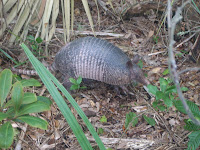 Zebras are herbivores and eat mainly grass, but bark, leaves, and twigs make up their diet too.
Zebras are herbivores and eat mainly grass, but bark, leaves, and twigs make up their diet too.Zebras can fall prey to lions, hyenas, and other African predators. Some Zebra species are endangered and protected, however, so humans aren't as much of a threat to them.
Zebra foals are born after a gestation period of a little more than a year. Usually, only one baby is born, but sometimes twins are, too. Foals can stand about 10 minutes after being born. They are weaned at 11 months
Every zebra has a unique stripe pattern. Just like fingerprints or snowflakes, no two zebras have the same stripes.
sources: http://www.buzzle.com/articles/what-do-zebras-eat.html
http://animals.nationalgeographic.com/mammals/zebra/
http://www.wildlife-pictures-online.com/zebra-information.html



















